The recreation of this sword is a collaboration between LK Chen and Matt Easton. Valuable guidance and advice, as well as the dimensions and specifications of the original Italian sword was provided by Matt Easton and his contributions made this close replica of an original sword possible. The blade is forged from well tempered GB 60Si2MnA High Carbon Spring Steel so that it can flex and reliably return true – the blade is finished with a keen cutting edge to deliver powerful cuts and slashes. The guard and pommel are of steel and the wooden grip is bound in tight black leather. Included with the sword is a finely crafted wood-core scabbard which is bound in well-stitched oxblood-hue leather and completed with a protective brass chape.
Ribaldo is a recreation of a beautifully proportioned early 15th century Italian sword, one of over 170 bearing inscriptions from the Arsenal of Alexandria in Egypt. The original was sold by Sotheby’s in 1979. This sword is very similar to the one in the Royal Armory collection and likely forged by the same sword maker sometime before 1432. “Ribaldo” is the name of Italian skirmisher troops who would have used this sort of type XIX sword at early 15th century. In art the “Ribaldo” troops are often seen with light armor, a shield and a spear and with this type of arming sword.The typology of this sword is Oakeshott XIX which was popular during the 15th century. The complex blade features a ricasso, flat hexagonal blade that change to lenticular shape at the tip. This geometry make Ribaldo a capable cut and thrust sword.
The sword has a very early example of a guard for the forefinger, which was an early step in a series of developments that would lead into increasingly complex hilts of the later 15th century and beyond. By looping the forefinger over the unsharpened ricasso, a user would be better able to align the edge when cutting and also gain a more refined control of the tip. Having the finger in front of the cross-guard would leave it vulnerable on a simple cross-hilted sword, hence the development of the protective hook.


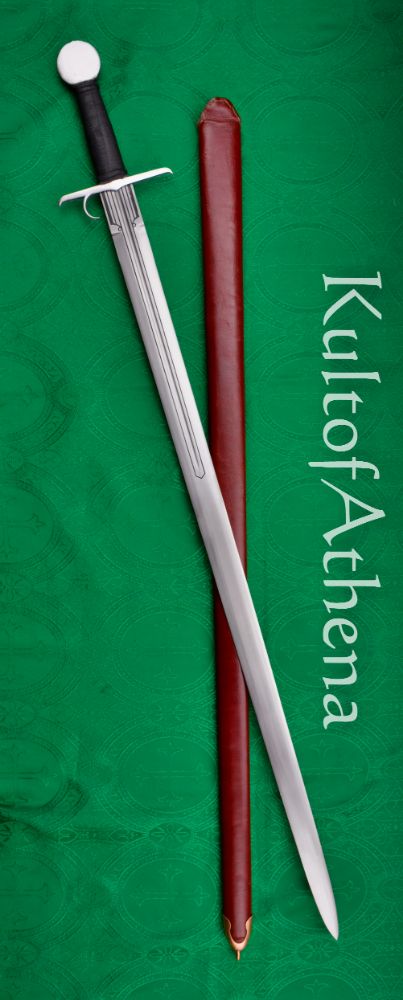

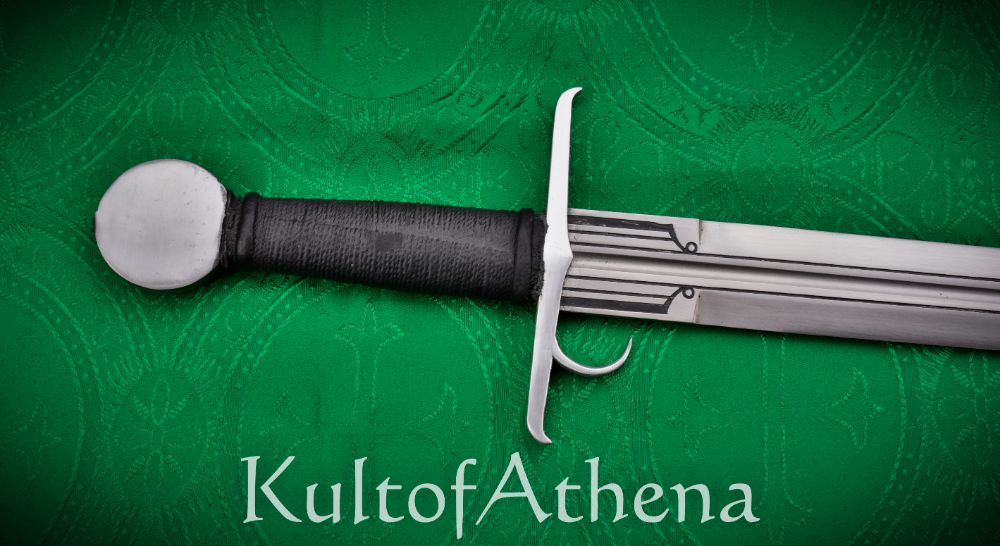
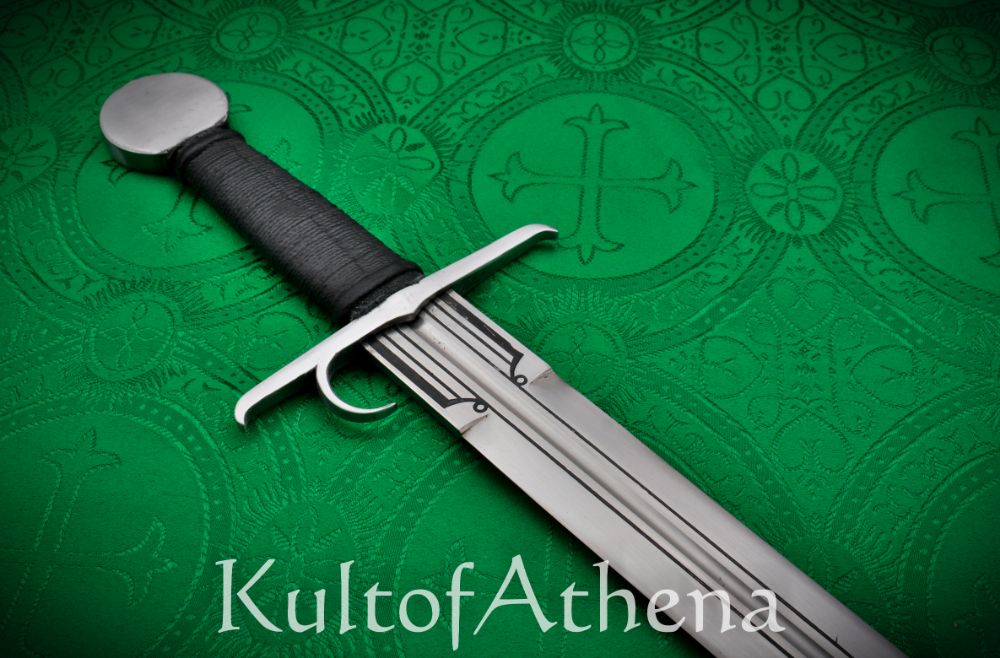
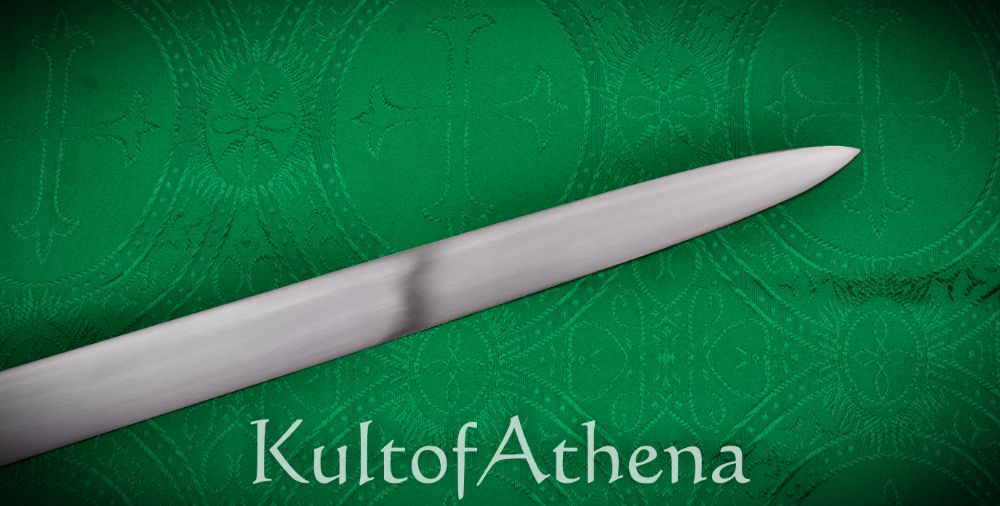
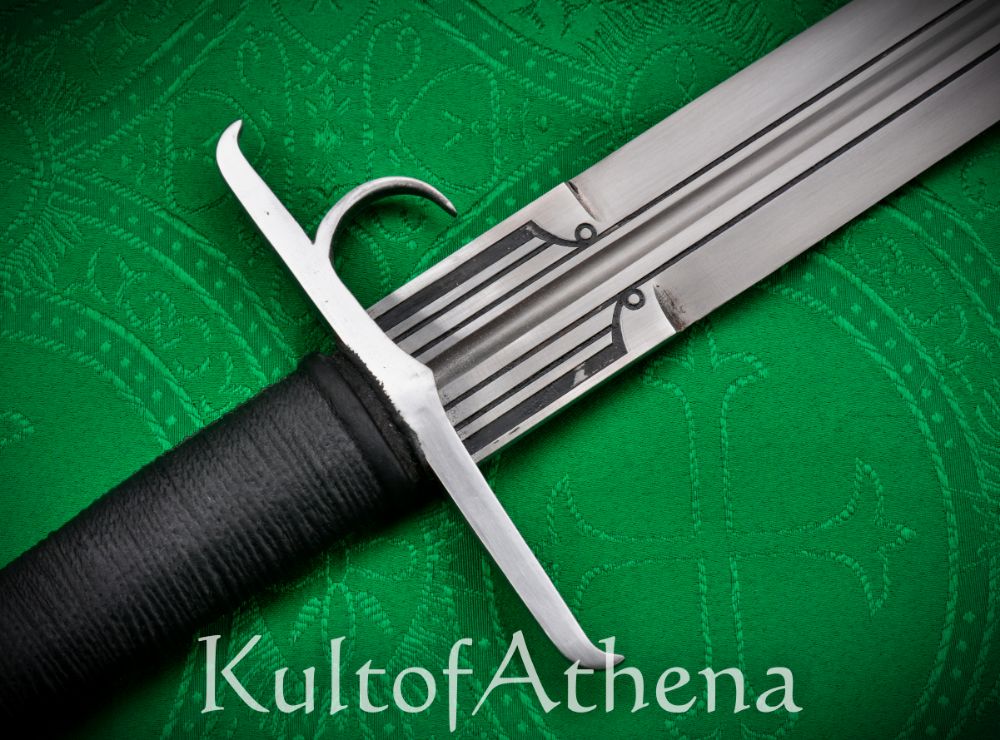

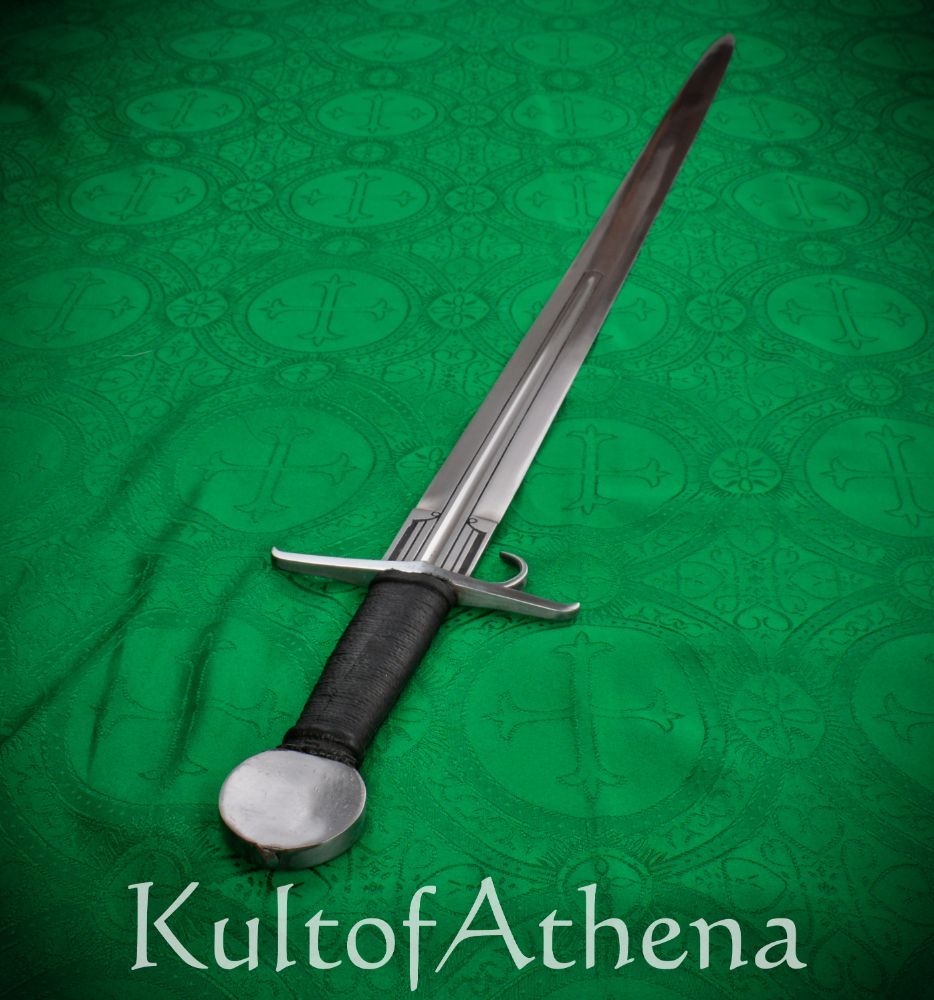
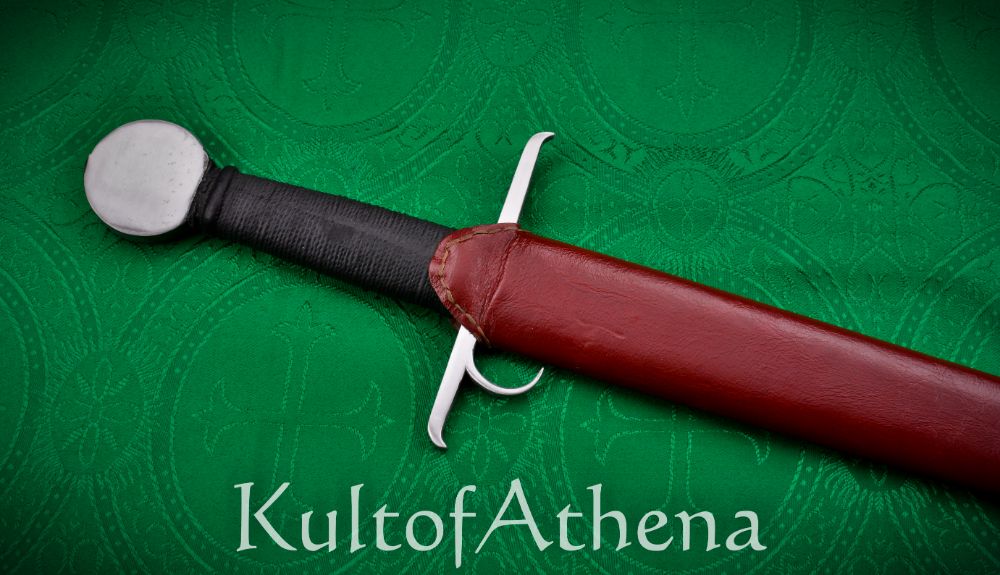

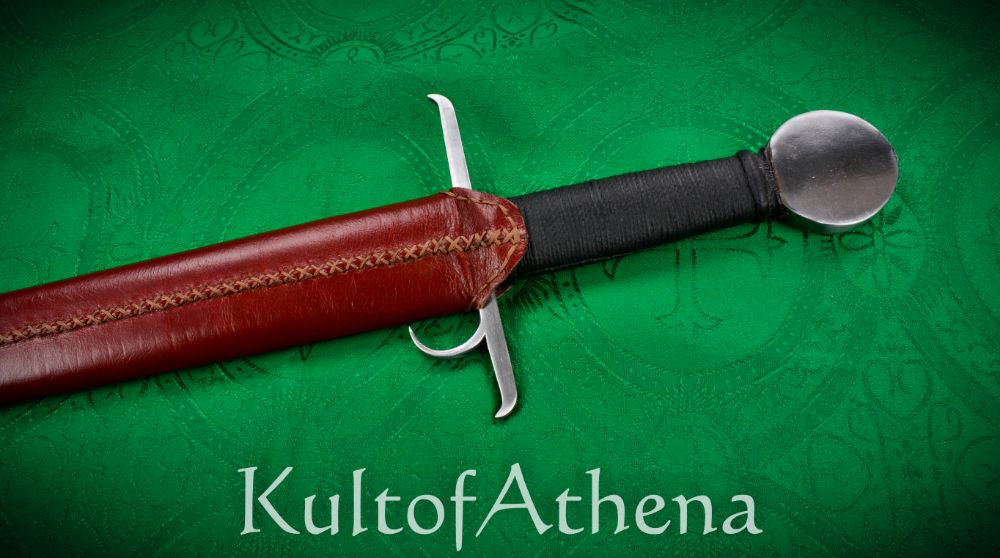



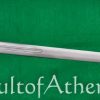
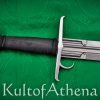
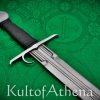
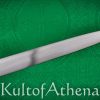
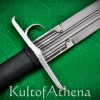
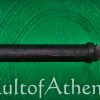
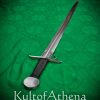
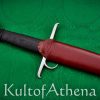

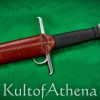

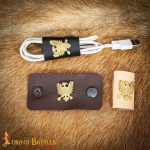
MorbidMongoose (verified owner) –
Disclaimer: I’d probably rate this closer to a 4.5 than a perfect 5, but the complaints I have are all quite minor so I’d rather give it the full 5 than drop it down.
The Ribaldo is a collaboration between Chinese swordsmith LK Chen and Matt Easton of Schola Gladiatoria fame, faithfully reproducing a sword from the Alexandria collection. I believe it is Mr. Chen’s first European design and he executed it beautifully.
Handling
The sword handles well, being relatively lively but still maintaining a lot of authority in the cut. I believe this is due to the fact that while the blade is long (longer than many longswords, in fact!), it has a complex distal taper, transitioning from rectangular at the ricasso to a broad hexagonal/lenticular region with fullering before slimming to a narrower hexagonal region, and then finally a slim lenticular cross section at the point. The ring and ricasso allows a finger to be comfortably slipped over the cross, allowing for greater control, particularly in the thrust. I tried some cuts against tatami mats and it performed admirably, though I am not especially experienced cutting one-handed. It’s fairly flexy towards the tip.
Fit and Finish
The sword is well manufactured and has clean, symmetric lines. The grip is simple but functional; it could be a little neater but no real complaints. The only thing I’d note as being a little off is the pommel, which has a slight asymmetry to it, but it’s not too noticeable. On its face the lack of ornamentation on the pommel is a little odd when compared to the etched pattern on the blade. but this is actually consistent with the original piece so while it looks a little out of place I’m happy that Mr. Chen kept the historical accuracy. The sword came with a scabbard that’s well made, if a little simple, without any buckles, etc, for carrying. It fits the sword snugly and it does not feel at significant risk of sliding out when held upside-down, so overall it’s a welcome addition at the price point.
Bottom line: A very well made sword for the price and a purchase I am glad I made.